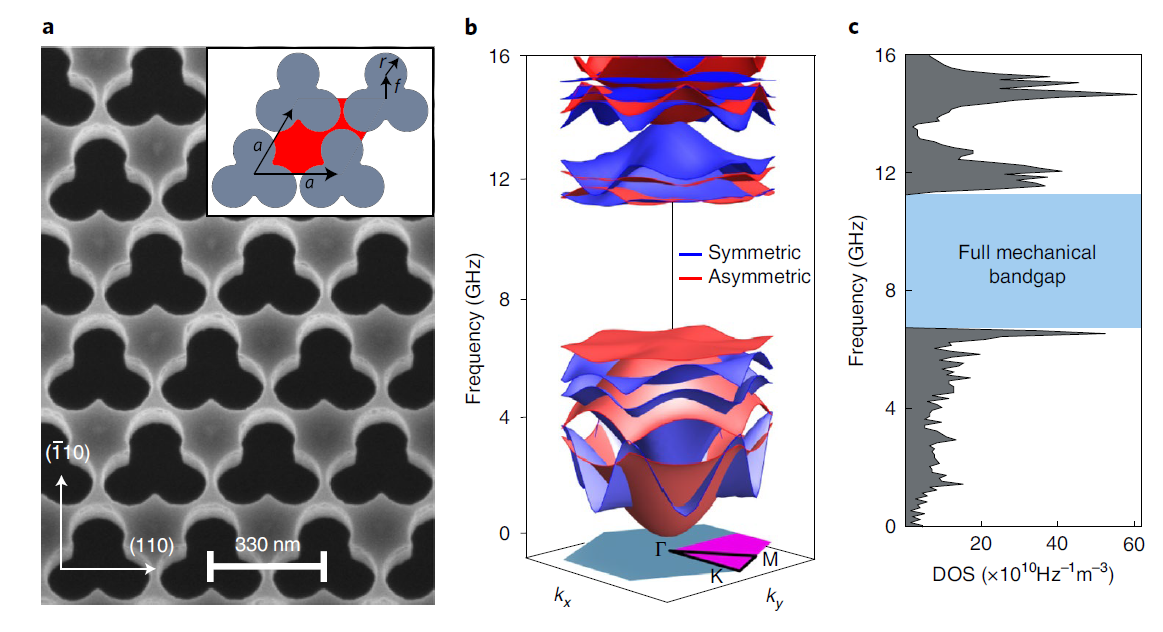Complex optomechanics
After many years exploring the role of disorder and imperfection in systems used in quantum photonics, I dragged my attention to the field of optomechanics. The systems and nanostructures used in quantum photonics are sufficiently small to be very sensitive to thermal energy. At room temperature, thermal energy activate vibrations around frequencies from the 100’s of MHz to few GHz. In general, phonons and vibrations are very detrimental for quantum photonics as the solid-state emitters used suffer from lattice vibrations and the photons emitted become distinguishable. Beyond that obvious reason to study phonons in these systems, my interest has been to explore the role of imperfection in the optomechanical coupling, the coupling between light at telecom wavelengths and the mentioned vibrations.
Fig. 1. Optomechanics in complex systems 
I have studied complex phononic systems where the modes with frequencies within the GHz range are excited thermally at room temperature so no external excitation scheme is required. Here, we explore disorder to mediate the interaction between GHz vibrations and THz photons. We also exploit silicon material nonlinearities to modulate the optical modes in these systems. Any photonic or optomechanical nanostructure is affected by some degree of imperfection. This is due to the unavoidable finite tolerance of the fabrication process. In this line of research, we investigate the role and limitations imposed by disorder for the photon-phonon interaction. We also explore novel ways of exploiting disorder as a resource to enhance this coupling in complex systems.
Fig. 2. Shamrock optomechanical crystals 
We have explores Anderson-localized cavity-Optomechanics in a two-dimensional optomechanical platform: a waveguide etched in a suspended silicon membrane that incorporates a slotted line air defect. Inherent and unavoidable fabrication imperfections are adequate to induce sufficient backscattering to realize Anderson-localization of optical modes. The introduction of an air slot allows for a strong confinement of the electromagnetic field that is guided along the slot, and enhances the ability for light to couple to in-plane mechanical motion. The resulting tightly confined Anderson-localized modes can be driven to enable mechanical amplification and self-sustained phonon lasing via optomechanical back-action. We design the photonic and phononic band structures to realize mechanical lasing up to 6.8 GHz that results from confinement of the mechanical mode. We confirm the existence of this mode through a combination of cavity optomechanical techniques and Brillouin light scattering spectroscopy. The role of disorder in cavity-Optomechanics has thus far been largely overlooked but our results show that disorder plays a crucial role, which in part can have a decisive impact on device functionality and in part opens perspectives for studies of multiple scattering and Anderson localization of bosonic excitations with parametric coupling to mechanical degrees of freedom.
I sumarize most of the resutls of this research line in this talk
